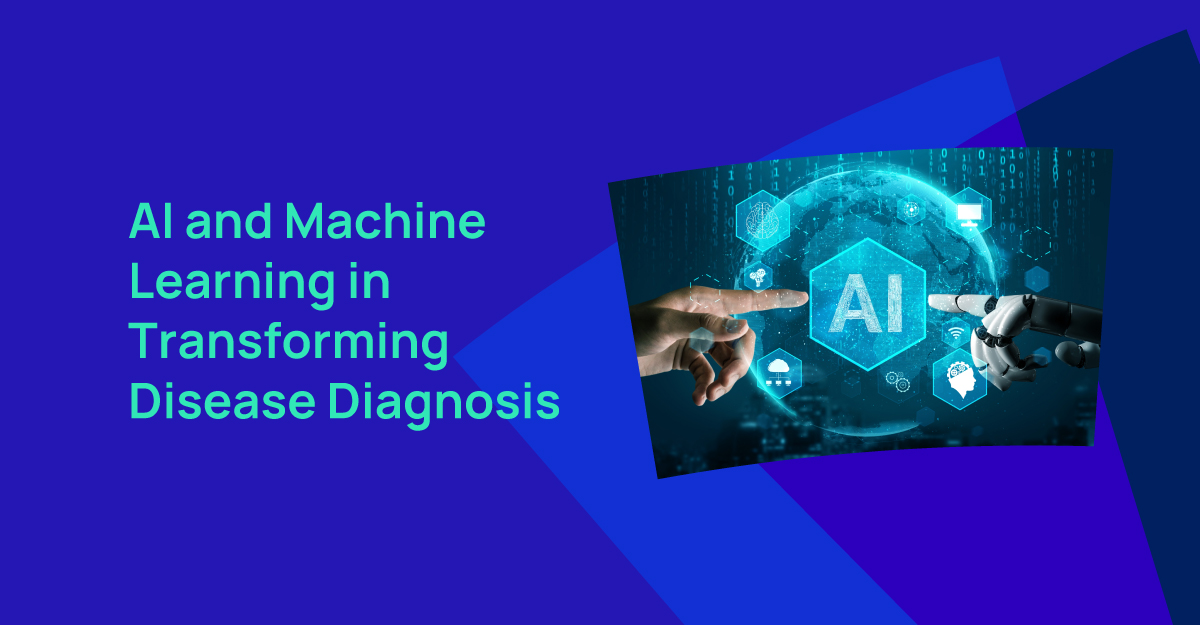Artificial Intelligence (AI) and Machine Learning (ML) are changing how we detect and diagnose diseases, offering a powerful way to identify health conditions early when interventions are most effective.
These technologies are now widely applied in areas like medical imaging, genetic research, and signal processing, helping healthcare professionals detect illnesses much earlier than traditional methods ever could.
Transforming Neurological Disease Diagnosis
AI and ML have made significant strides in detecting neurological diseases. Early diagnosis is critical for effective management and improved patient outcomes.
Alzheimer’s Disease:
AI tools can analyze brain scans and detect the early buildup of plaques that cause cognitive decline and memory loss. This allows doctors to intervene before symptoms worsen, offering patients a better chance at managing the disease.
Parkinson’s Disease:
AI systems can identify subtle changes in voice patterns and hand movements that signal the onset of Parkinson’s. These insights enable early diagnosis and symptom management, significantly improving patients' quality of life.
Epilepsy:
AI can predict seizures and identify patterns the human eye might miss using brainwave data from EEG scans. This can help patients and caregivers take preventive actions to reduce the severity of episodes.
Autism Spectrum Disorder (ASD):
AI analyzes brain imaging, genetic data, and behavioral patterns to detect early signs of autism. Early intervention is key to providing the necessary support for children with ASD.
AI’s Role in Diagnosing Eye Conditions
The use of AI in eye care has brought speed and accuracy to diagnosing several conditions that can affect vision:
Glaucoma:
AI tools can identify early damage to the optic nerve through eye scans, allowing for timely treatment to prevent vision loss.
Amblyopia (Lazy Eye):
AI systems examine images and test results to detect amblyopia in children, enabling prompt corrective measures.
Cataracts:
AI evaluates images from eye exams to detect cataracts and assess their severity, ensuring timely surgeries and better patient outcomes.
Conjunctivitis (Pink Eye):
AI-based diagnosis systems quickly analyze eye images to confirm signs of conjunctivitis, such as redness and swelling, allowing for faster treatment.
Retinoblastoma:
AI algorithms detect abnormalities or tumors in retinal images, providing early diagnosis of this rare but serious eye cancer in children.
Detecting Respiratory Diseases with AI
AI’s ability to analyze breathing patterns and related data is helping diagnose respiratory conditions more effectively:
Asthma:
AI tracks patient history, environmental triggers, and genetic factors to create personalized treatment plans, optimizing the use of inhalers and medications.
Sleep Apnea:
AI tools use data from wearable devices and home tests to identify sleep apnea symptoms, often uncovering issues that traditional tests may miss.
Transforming Diabetes Care with AI
From predicting diabetes onset to managing complications, AI has transformed the way diabetes is diagnosed and treated:
Early Diagnosis and Risk Prediction:
AI models analyze patient data to predict the risk of developing diabetes, enabling proactive interventions.
Personalized Treatment Plans:
Real-time data from wearable devices and glucose monitors help AI systems recommend tailored insulin doses and medication schedules.
Optimized Blood Sugar Control:
AI-powered insulin pumps automatically adjust delivery, helping patients maintain stable glucose levels without constant monitoring.
Complication Prevention:
AI detects early signs of diabetic retinopathy and kidney damage, allowing timely treatments that prevent severe complications.
Drug Discovery:
AI accelerates the discovery of new diabetes treatments by analyzing large datasets to identify promising therapies.
Key Benefits of AI in Early Disease Detection
The advantages of using AI for early disease detection are profound:
Improved Accuracy:
AI can analyze vast datasets, including medical images and genetic information, with a precision that surpasses human capabilities.
Faster Diagnosis:
By processing data quickly, AI enables earlier disease identification and faster treatment decisions.
Personalized Care:
AI customizes treatments based on individual patient data, enhancing the effectiveness of interventions.
Cost Savings:
Early detection helps avoid expensive treatments for advanced-stage diseases, reducing healthcare costs.
Global Scalability:
AI can be deployed worldwide, improving access to early disease detection, even in underserved areas.
Continuous Monitoring:
AI systems monitor health in real-time, detecting changes that might signal the onset of a disease.
Steps to Build an AI-Based Disease Detection System
Building an AI-based disease detection system requires a clear plan and attention to detail:
Define the Problem:
Identify the disease you aim to detect and understand the data requirements, such as medical images, patient history, or genetic data.
Data Collection:
Gather reliable data from hospitals and research centers. Ensure the data complies with privacy regulations.
Data Preparation:
Clean and organize the data into a usable format, ensuring it is suitable for machine learning models.
Feature Selection:
Identify the key features relevant to your target disease. This will ensure that the system focuses on the most critical factors.
Choose an AI Model:
Select the right model for your task—for example, neural networks for image classification or decision trees for prediction.
Train the Model:
Divide the dataset into training and testing sets. Use cross-validation to enhance the model’s predictive power.
Validate and Evaluate:
Optimize the model’s performance by adjusting parameters and measuring accuracy, precision, and recall.
Integrate with Real-Time Data:
To improve reliability and applicability, use systems like Electronic Health Records (EHR) for real-time data collection.
Deployment:
Create a user-friendly interface. Ensure the system is scalable and capable of handling real-time inputs.
Monitor and Improve:
Gather user feedback to refine the system and update the model with new datasets to maintain accuracy.
Ensure Data Security:
Implement robust security measures to protect patient data and comply with regulations such as HIPAA and GDPR.
Challenges in AI Integration for Healthcare
While AI offers immense potential, some challenges need to be addressed:
Data Quality and Availability:
Large, high-quality datasets are essential for AI models but are often difficult to obtain.
Privacy and Security:
Protecting sensitive patient data and ensuring compliance with regulations is a significant concern.
Model Reliability:
AI systems must be accurate and reliable, avoiding false positives or negatives that could harm patients.
System Integration:
Many healthcare systems are not designed to integrate modern AI tools, posing technical challenges.
Clinical Adoption:
Healthcare professionals may hesitate to trust or adopt AI solutions because they are unfamiliar or fear losing control.
Regulatory Hurdles:
AI models must pass rigorous testing and approval processes, which can be time-consuming.
Conclusion
AI ML development services revolutionize disease detection and diagnosis, offering earlier, more accurate interventions and personalized care. These advancements promise to improve patient outcomes while reducing healthcare costs.
With continued innovation and collaboration, AI has the power to transform global healthcare, making early detection and effective treatment accessible to all.



